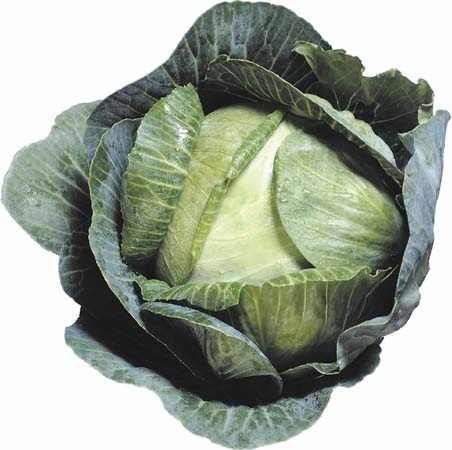cabbage
plant
 vegetable and fodder plant the various forms of which are said to have been developed by long cultivation from the wild, or sea, cabbage (Brassica oleracea) found near the seacoast in various parts of England and continental Europe. The common horticultural forms of Brassica oleracea may be classified according to the plant parts used for food and the structure or arrangement of those parts: (1) leaves: loose or open foliage ( kale and collards (collard)) and leaves folded into compact heads (large terminal heads—e.g., common cabbage and savoy cabbage—and small axillary heads—e.g., Brussels sprouts); (2) flowers and thickened flower stalks: flowers little or not modified (sprouting broccoli) and flowers much thickened and modified (cauliflower and heading broccoli); (3) stem: much expanded to a bulbous structure ( kohlrabi).
vegetable and fodder plant the various forms of which are said to have been developed by long cultivation from the wild, or sea, cabbage (Brassica oleracea) found near the seacoast in various parts of England and continental Europe. The common horticultural forms of Brassica oleracea may be classified according to the plant parts used for food and the structure or arrangement of those parts: (1) leaves: loose or open foliage ( kale and collards (collard)) and leaves folded into compact heads (large terminal heads—e.g., common cabbage and savoy cabbage—and small axillary heads—e.g., Brussels sprouts); (2) flowers and thickened flower stalks: flowers little or not modified (sprouting broccoli) and flowers much thickened and modified (cauliflower and heading broccoli); (3) stem: much expanded to a bulbous structure ( kohlrabi).All these forms of cabbage have succulent leaves free of hairs and covered with a waxy coating; in most of them the waxy coat gives the leaf surface a gray-green or blue-green colour. These plants grow best in mild to cool climates and tolerate frost, and some of them tolerate hard freezing at certain periods of growth. Hot weather impairs the growth and quality of all of them. Edible portions of these plants are low in caloric value. They are an excellent source of ascorbic acid and also supply minerals and necessary bulk in the diet. See also broccoli; Brussels sprouts; cauliflower; collard; kale; kohlrabi.
Head cabbage (Brassica oleracea var. capitata) is by far the most important form. Hard-headed cabbage is a new crop plant that was developed in northern Europe during the European Middle Ages. Soft-headed cabbages such as the savoy type are believed to have originated earlier in southern Europe. Head cabbage, generally designated simply cabbage, is a major table vegetable in most countries of the temperate zone. Cole slaw, a salad of grated cabbage, originated in Holland and is extremely popular in the United States. Cabbage soup is a traditional country dish throughout Europe.
The heads of horticultural varieties of head cabbage range in shape from pointed, through globular, to flat; from soft to hard in structure; through various shades of green, gray-green, and magenta or red; and from less than 1 kg to more than 3 kg (2 to 7 pounds) in weight. They also are suitable for different uses. The less-hard varieties must be used more or less promptly after harvest for salads, in cookery, or for the manufacture of sauerkraut; (sauerkraut) the very hard, late-maturing Danish type is suited to winter storage.
- Mabel Loomis Todd
- Mabel Normand
- Mabel Thorp Boardman
- Mabillon, Jean
- Mabini, Apolinario
- Mabinogion
- Mabley, Moms
- macadam
- macadamia
- Macaire
- Macapagal, Diosdado
- Macapá
- macaque
- Macarius
- Macarius Bulgakov
- Macarius Magnes
- Macarius the Egyptian
- macaroni
- macaronic
- macaroon
- MacArthur, Charles
- MacArthur, Douglas
- Macarthur, John
- Macartney, George Macartney, Earl, Viscount Macartney of Dervock, baron of Lissanoure, Baron Macartney of Parkhurst and of Auchinleck, Lord Macartney
- Macas